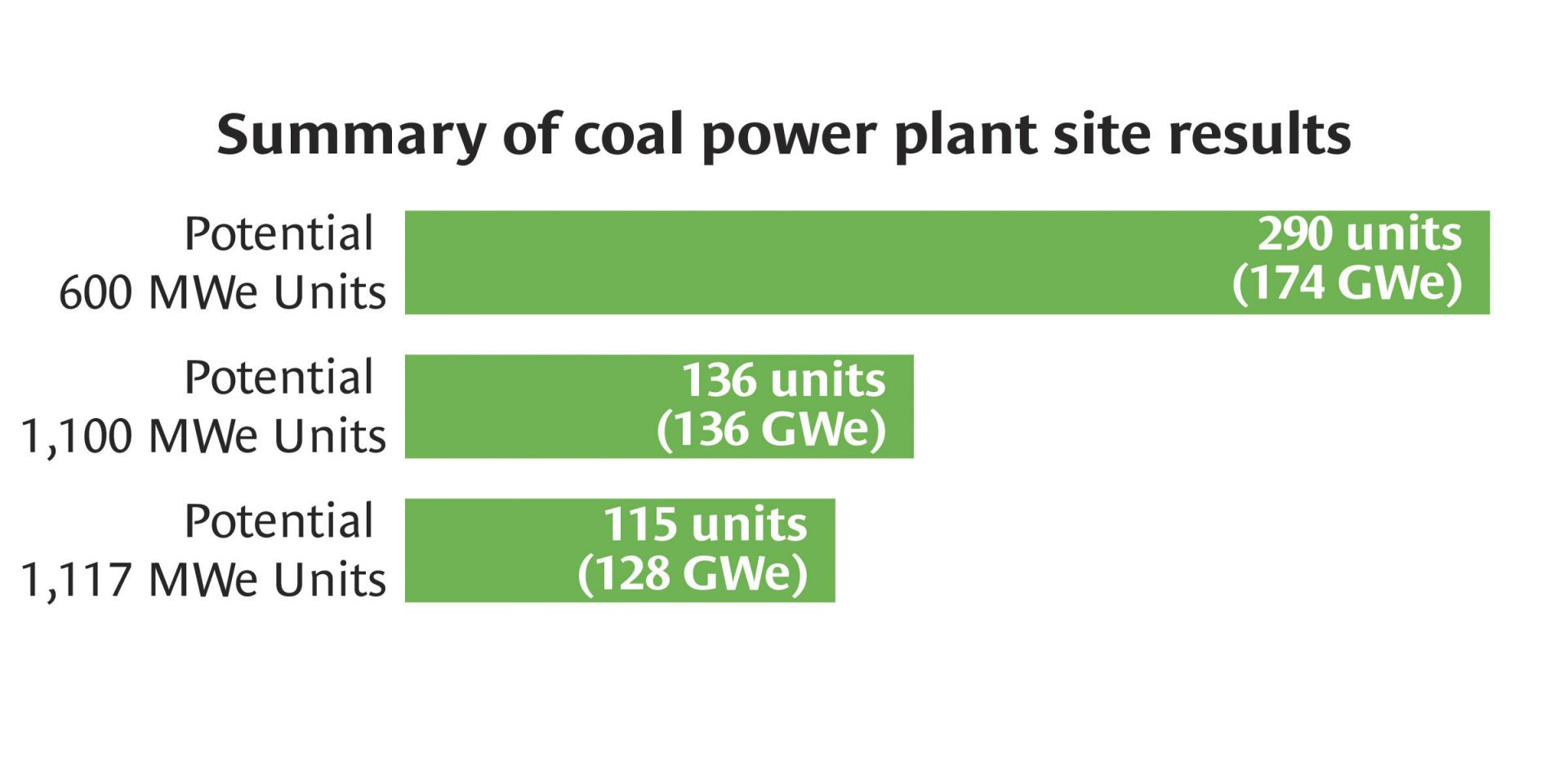Data from Table 1 from DOE’s SA&I report shows the potential new nuclear generation at 145 coal power plant sites with nameplate capacities above 600 MWe. (Source: DOE, Evaluation of Nuclear Power Plant and Coal Power Plant Sites for New Nuclear Capacity)
The Department of Energy’s Office of Nuclear Energy has released a new report estimating that there may be the potential to install 60 GWe–95 GWe of new capacity at currently operating and recently retired nuclear power plants in the United States. The report also evaluated the potential of building new nuclear plants near current and retired coal power plants. The report, titled Evaluation of Nuclear Power Plant and Coal Power Plant Sites for New Nuclear Capacity, was prepared as part of DOE-NE’s Systems Analysis and Integration (SA&I) campaign.

Data from Table 2 from the DOE’s SA&I report shows the potential new nuclear generation at 54 operating and 11 retired nuclear power plants. (Source: DOE, Evaluation of Nuclear Power Plant and Coal Power Plant Sites for New Nuclear Capacity)
Evaluated factors: SA&I researchers evaluated the new capacity potential of all 54 operating and 11 recently retired nuclear plants in 31 states. They focused on examining the footprint/acreage, aerial analyses, and utility plans of the facilities and also used a siting analysis tool that was developed at Oak Ridge National Laboratory. Some specific factors that were analyzed for each site were the availability of cooling water, the proximity to large population centers or hazardous facilities, and seismic or flood risks.
Large and small reactors: According to the preliminary analysis, there are 41 operating or retired nuclear plants capable of hosting at least one new large light water reactor, such as the Westinghouse AP1000 reactor, which was used most recently in the U.S. at Vogtle-3 and -4 in Georgia. The report elaborates that there is the potential for 54 additional 1,117-MWe units, which would add 60 GWe of power to U.S. nuclear capacity. Nuclear capacity could be further increased to 95 GWe with the addition of 158 smaller advanced reactors, such as 600 MWe units, at other sites.
Licensing engagements: The authors note that the licensing process for new nuclear reactors could be accelerated—and the costs of new builds reduced—by taking advantage of cases in which utility companies have previously engaged with the NRC in the licensing process. Such licensing engagements have occurred for 17 reactors that were ultimately never built—reactors that would have added a total of 24 GWe of capacity at 12 different sites. Thus, the report points out, there is already a high degree of confidence that these sites would be found suitable for new reactor projects.
Coal plants: The evaluation of potential new nuclear capacity near 145 coal plants in 36 states revealed an additional 128 GWe–174 GWe of power that might be added at such locations, where existing energy-related workforces and infrastructure would likely prove beneficial for new nuclear projects. The precise amount of power that could be added at these coal sites would depend on the types of reactors that are built. For example, 115 units capable of generating 1,117 MWe would add a total of 128 GWe, while 290 smaller 600-MWe units would add a total of 174 GWe.






